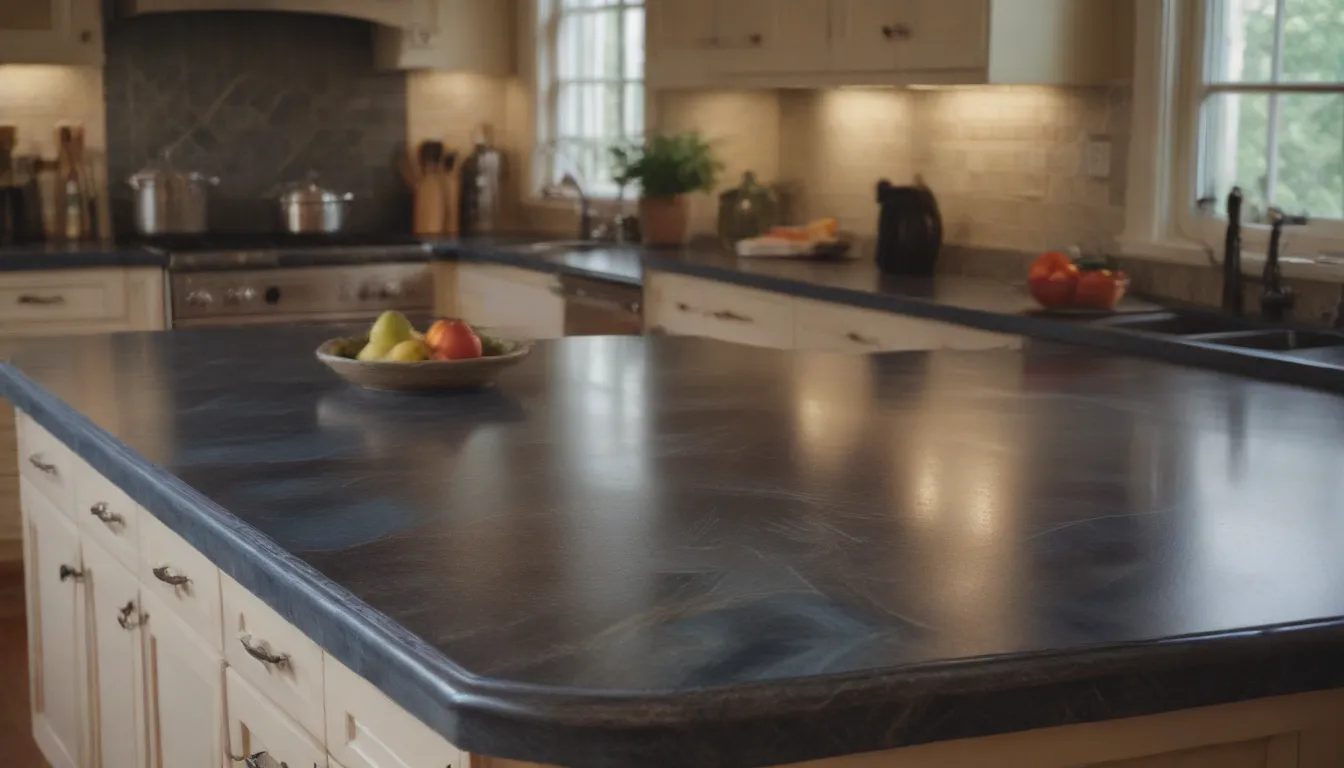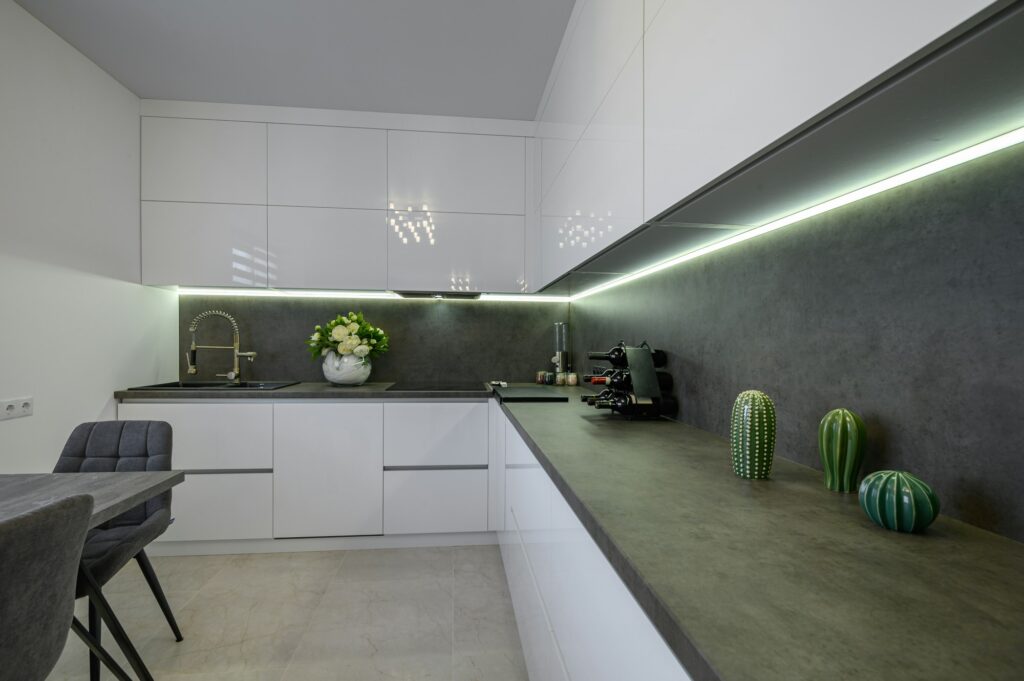Tile Kitchen Countertops: A Fresh and Affordable Option for Your Home

Are you considering updating your kitchen countertops but want an option that’s both stylish and budget-friendly? Tile kitchen countertops could be the perfect solution! In this comprehensive guide, we’ll explore the benefits, options, and installation process for tile countertops to help you decide if they’re right for your home.
Why Choose Tile Countertops?
Tile countertops offer several advantages over other materials like granite, quartz, or solid surface:
- Affordability: Tile is one of the most cost-effective countertop materials available. You can find options to suit almost any budget.
- Durability: High-quality ceramic or porcelain tile is highly durable and resistant to scratches, chips, heat, and stains. With proper care, tile countertops can last for decades.
- Versatility: Tile comes in an endless array of colors, patterns, shapes, and sizes. You can create a look that’s sleek and modern, warm and rustic, or bold and artistic.
- DIY-Friendly: While professional installation is recommended for the best results, a skilled DIYer can install tile countertops with the right tools and preparation.
Choosing the Right Tile

When selecting tile for your kitchen countertops, consider these key factors:
Material
The two most common tile materials for countertops are ceramic and porcelain.
Ceramic tile is made from clay that is fired in a kiln. It’s affordable, comes in a wide variety of colors and designs, and is suitable for most countertop applications. However, it may be more prone to chipping or cracking than porcelain.
Porcelain tile is made from finer, denser clay and fired at higher temperatures, resulting in a harder, more durable product. It’s highly resistant to moisture, stains, and wear. Porcelain often has a more consistent color throughout the tile, so chips may be less noticeable.
Size and Shape
Tile comes in a range of sizes, from tiny mosaics to large format tiles. The size and shape you choose will impact the overall look and feel of your countertop, as well as the installation process and cost.
Smaller tiles, such as 2-inch squares or hexagons, can create a intricate, mosaic-like pattern. They’re also a good choice for covering curved or irregular surfaces. However, smaller tiles require more grout lines, which can be harder to keep clean.
Larger tiles, such as 12-inch squares or 24-inch rectangles, offer a more streamlined, contemporary look with fewer grout lines. They can also make a small kitchen feel more spacious. However, larger tiles may require a more precise installation and are less forgiving of uneven surfaces.
Color and Pattern
One of the biggest advantages of tile is the vast array of colors, patterns, and textures available. You can choose a single color for a uniform look, mix complementary colors for visual interest, or create a custom pattern using different shapes and sizes.
Some popular tile styles for kitchen countertops include:
- Subway tile: Classic rectangular tiles, typically in white or light colors, for a clean, timeless look.
- Geometric patterns: Hexagons, diamonds, or herringbone patterns can add a playful, modern touch.
- Natural stone look: Porcelain tiles that mimic the look of marble, granite, or slate offer the beauty of natural stone with easier maintenance.
- Wood look: Porcelain planks that resemble hardwood can create a warm, rustic feel while providing the durability of tile.
When choosing colors and patterns, consider your kitchen’s overall style, the color of your cabinets and walls, and your personal preferences. Neutral tones are a safe bet for a timeless look, while bolder colors can make a striking statement.
Installation Process
Installing tile countertops requires careful preparation, precision, and patience. Here’s an overview of the main steps involved:
- Prepare the substrate: Remove any existing countertop material and ensure the surface is level, smooth, and free of debris. Install a cement backer board if necessary for added stability.
- Plan the layout: Measure your countertop and sketch out your tile layout, including any patterns or accent tiles. Make sure to account for grout lines and overhang.
- Cut the tiles: Using a wet saw or tile cutter, cut the tiles to fit your layout. Make sure to wear safety glasses and follow the manufacturer’s instructions.
- Apply the adhesive: Spread a thin-set mortar evenly over the substrate using a notched trowel. Work in small sections to prevent the mortar from drying out.
- Set the tiles: Place the tiles onto the mortar, using spacers to maintain even grout lines. Use a level to ensure the tiles are even and make adjustments as needed.
- Grout the tiles: Once the mortar has cured (typically 24-48 hours), mix and apply the grout according to the manufacturer’s instructions. Use a rubber float to spread the grout evenly and a damp sponge to remove excess.
- Seal the grout: After the grout has cured (typically 48-72 hours), apply a grout sealer to protect against stains and moisture.
While it is possible to install tile countertops yourself, it can be a challenging and time-consuming process. If you’re unsure of your DIY skills, consider hiring a professional tile installer for the best results.
Maintenance and Care
To keep your tile countertops looking their best, follow these simple maintenance tips:
- Clean regularly: Wipe down your countertops daily with a damp cloth or sponge to remove crumbs and spills. Use a mild detergent or tile cleaner for deeper cleaning.
- Avoid abrasive cleaners: Harsh chemicals or abrasive scrubbers can damage the tile or grout. Stick to gentle, pH-neutral cleaners.
- Seal the grout: Reapply grout sealer every 1-2 years to maintain its protective barrier against stains and moisture.
- Use trivets and cutting boards: To prevent scratches, chips, or heat damage, always use trivets for hot pots and pans and cutting boards for chopping and slicing.
- Fix chips or cracks promptly: If you notice any damage to your tiles, have them repaired or replaced as soon as possible to prevent further deterioration.
With proper care and maintenance, your tile kitchen countertops can remain beautiful and functional for many years to come.
Conclusion
Tile kitchen countertops offer a versatile, affordable, and durable option for homeowners looking to update their kitchen. With a wide range of materials, colors, and patterns to choose from, you can create a look that perfectly suits your style and budget.
While the installation process requires some skill and patience, the end result is a beautiful and long-lasting surface that can withstand the daily wear and tear of a busy kitchen. By following proper maintenance and care guidelines, you can enjoy your tile countertops for decades to come.
So if you’re considering a kitchen refresh, don’t overlook the potential of tile countertops. With their combination of affordability, durability, and style, they may just be the perfect choice for your home.





